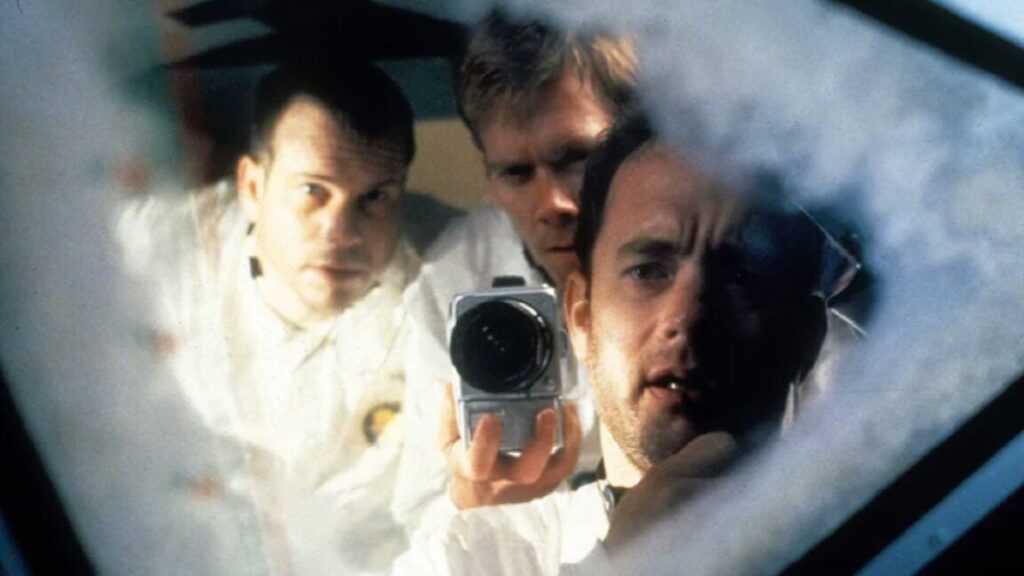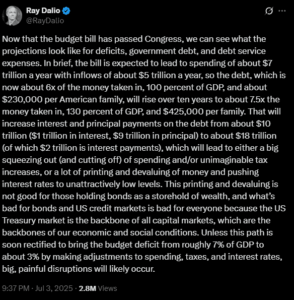
This year marks the 30th anniversary of the 1995 Oscar-winning film, Apollo 13, directed by Ron Howard. The film serves as a masterful homage to NASA’s Apollo program and the eponymous space mission that became known as a “successful failure.” As we revisit this riveting portrayal of American science, ingenuity, and daring, it remains a testament to the human spirit and technological prowess.
Apollo 13 is a dramatized retelling of the aborted 1970 lunar mission, which against steep odds, ended with all three astronauts safely returning to Earth. The film opens with astronaut Jim Lovell, played by Tom Hanks, hosting a watch party for Neil Armstrong’s historic moonwalk in July 1969. Lovell, initially slated to command the Apollo 14 mission, is thrilled when he and his crew—Ken Mattingly (Gary Sinise) and Fred Haise (Bill Paxton)—are reassigned to Apollo 13. However, his wife, Marilyn (Kathleen Quinlan), expresses her apprehension, noting the superstition surrounding the number 13.
The Real Mission Behind the Film
The Apollo 13 mission, launched on April 11, 1970, was intended to be the third crewed mission to land on the Moon. However, the mission took a dramatic turn when an oxygen tank exploded two days into the journey, crippling the spacecraft. The crew, consisting of Jim Lovell, Fred Haise, and Jack Swigert, faced life-threatening challenges as they worked with NASA’s ground team to navigate their way back to Earth.
In the film, this pivotal moment is depicted with intense drama. During a routine maintenance task, an electrical short causes an oxygen tank to explode, forcing the crew to evacuate the command module, Odyssey, and use the lunar module, Aquarius, as a lifeboat. The mission’s focus shifts from lunar exploration to survival, as the astronauts and NASA engineers collaborate to overcome a series of daunting obstacles.
Overcoming Adversity
The film highlights the ingenuity and teamwork required to bring the astronauts home safely. The crew dealt with freezing conditions, dwindling rations, and rising carbon dioxide levels, all while maintaining their composure under pressure. One of the most gripping scenes involves a manual course correction without the aid of a navigational computer, a testament to the astronauts’ skill and determination.
“Houston, we have a problem.” – Jim Lovell, Apollo 13 mission
This iconic line, delivered by Hanks in the film, encapsulates the gravity of the situation faced by the astronauts and the NASA team. The phrase has since become synonymous with crisis management and problem-solving under pressure.
The Impact of Apollo 13 on Popular Culture
Since its release, Apollo 13 has left an indelible mark on popular culture, inspiring a renewed interest in space exploration and the Apollo program. The film’s success can be attributed to its accurate portrayal of the events, strong performances, and Howard’s meticulous attention to detail. It garnered nine Academy Award nominations, winning two for Best Film Editing and Best Sound.
Experts in the field of space exploration have praised the film for its authenticity. Dr. Robert Zubrin, a renowned aerospace engineer, noted, “The film captures the essence of the Apollo era—the courage, the innovation, and the relentless pursuit of knowledge.”
Lessons from Apollo 13
The story of Apollo 13 continues to resonate because it embodies the resilience and resourcefulness that define human exploration. The mission demonstrated the importance of preparation, teamwork, and the ability to adapt in the face of unforeseen challenges. These lessons remain relevant today as space agencies worldwide push the boundaries of exploration.
By the Numbers: The Apollo 13 mission lasted 142 hours, 54 minutes, and 41 seconds, covering a total distance of 622,268 miles.
Looking to the Future
As we commemorate the 30th anniversary of Apollo 13, it is essential to reflect on the mission’s legacy and its influence on future space endeavors. NASA continues to build on the lessons learned from Apollo 13 as it embarks on new missions to the Moon and beyond through the Artemis program.
The film serves as a reminder of the potential for human achievement when faced with adversity. As we look to the future of space exploration, the story of Apollo 13 will undoubtedly continue to inspire generations of scientists, engineers, and dreamers.
In conclusion, Apollo 13 is more than just a film; it is a celebration of human ingenuity and the relentless pursuit of exploration. As we honor its 30th anniversary, we are reminded of the enduring spirit of discovery that drives us to reach for the stars.





